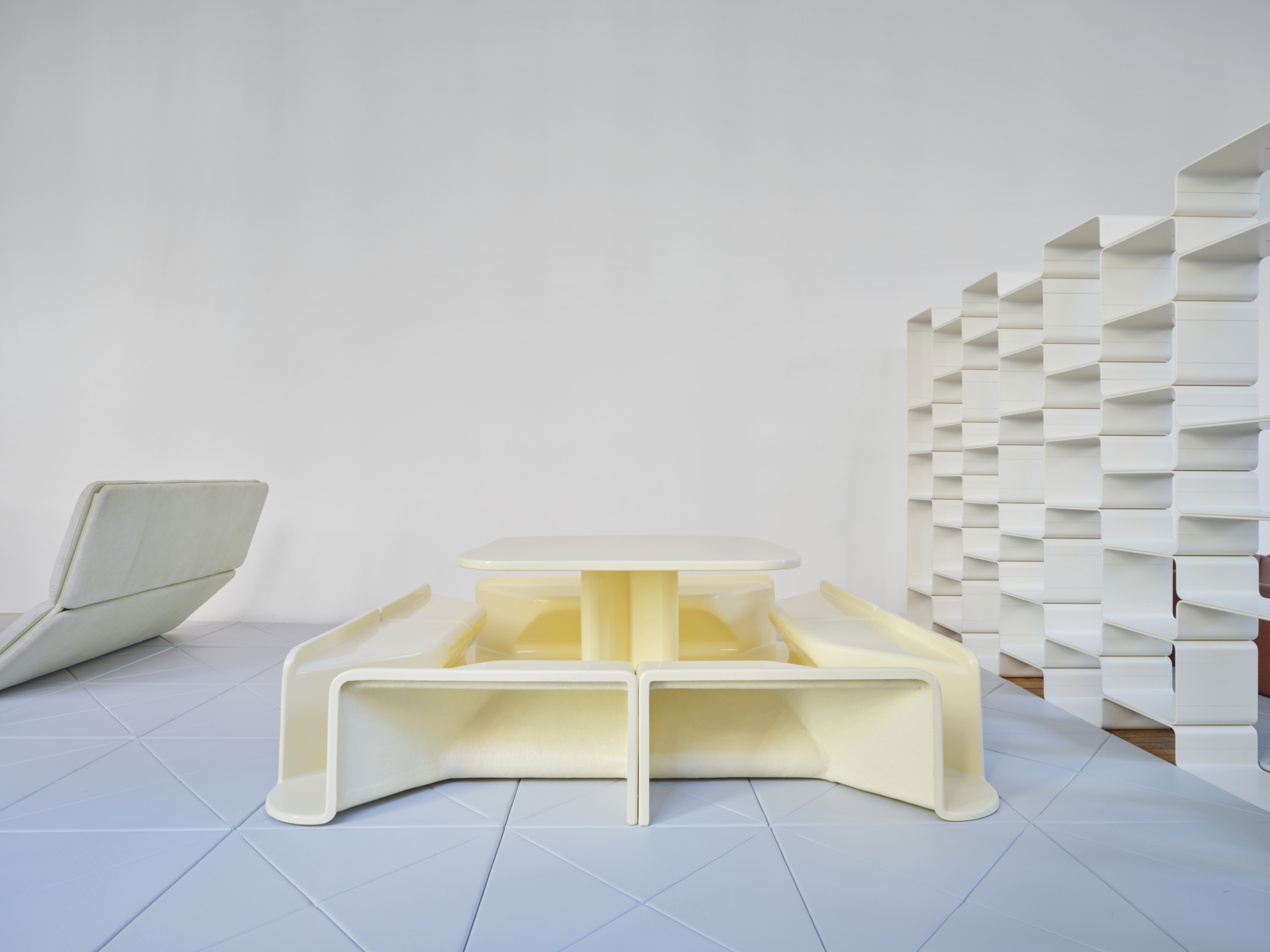Pierre Paulin: Action House
November 16, 2024–February 10, 2025
101 Spring Street
New York, NY

Pierre Paulin: Action House
November 16, 2024–February 10, 2025
101 Spring Street
New York, NY

In 1968, Paulin collaborated with Herman Miller on a project that sought to reinterpret Miller’s Action Office program for a residential setting. Paulin designed the entire concept in six maquettes; the project’s goal was to construct and deconstruct, allowing the furniture to become the user’s companion by making it possible to move beyond the limitations of interior design and be the architect of spaces dedicated to life and work. Constrained by industrial parameters, the project was never produced by Miller and existed only as prototypes that remained for years at Paulin’s residence. The maquettes by Paulin, maquette d’aménagement intérieur numbers zero through five, are now part of the collection of the Centre Georges Pompidou. In 2014, the project was officially produced for the first time by Paulin, Paulin, Paulin, the family-run project dedicated to preserve and develop the work of the designer.
In Paulin’s concept of utopian design, the user could combine spaces and modules according to their personal culture, psychological self-conception, and the image they wished to project. In his future, the user could create their own story, based on personal life experience. Three designs—Dune, Déclive, and Tapis-Siège—included in the exhibition at 101 Spring Street were prototypes for unrealized projects during Paulin’s lifetime. Originally designed in 1970, the Dune Ensemble is made of modules that can be arranged in varying configurations to create living room iterations for lounging and entertaining. The design derives from its function; Paulin’s methodology centered around the importance of the body and its comfort in relation to the different activities and intentions for living spaces. In the installation at Judd Foundation, Dune consists of twenty-five separate modules and a side table, opening to a number of possibilities for room design.
The latest piece within the exhibition, Tapis-Siège, designed in 1972, presents a configuration of upholstered seatbacks and propped-up folds connected by a common surface. An example of Paulin’s “rug-seats,” the modular floor piece turns up at the corners to delineate space and function. The design centers Paulin’s concern on how design should rethink social concepts and living spaces, and to exemplify his interest in the floor as a surface for new possibilities. Independently produced by the designer for his family house in Rue des Ursulines, Tapis-Siège is informed by the tatami and the spatial traditions of Japanese design of sitting close to the ground and sharing common spaces. With this project, the body dictates its relationship with the space around it, placing a priority on personalized use.
Born a year apart, Paulin and Donald Judd approached design as self-consistent systems. In each case they worked from individual ideas of what constituted good design and then elaborated from there, each eventually making complex universes over the years. Paulin, like Judd, anticipated the necessary alliance between a changing world and new production techniques to inform the role of design at a micro and macro level.
In conjunction with the exhibition, Judd Foundation will host a conversation with Flavin Judd, Artistic Director of Judd Foundation; Benjamin Paulin, Co-Founder of Paulin, Paulin, Paulin; and Alexandra Cunningham Cameron, Curator of Contemporary Design at the Cooper Hewitt, Smithsonian Design Museum. Tickets for the program will be released in November.
Pierre Paulin: Action House will be open to the public on Fridays and Saturday from 1:00pm to 5:00pm.
Pierre Paulin (1927–2009) was a pioneering furniture and interior designer known for his visionary use of modern materials and production techniques. Beginning his career as a sculptor, Paulin early on began exploring form, function, and interior design, producing his first furniture pieces by 1953, garnering attention from iconic design manufacturers like Thonet-France.
In 1967, he was invited by Mobilier National, the French institution responsible for furnishing state offices, to design the furniture for the Louvre Museum. At the invitation of then President Georges Pompidou, Paulin was commissioned to redesign the private apartments at Elysée Palace. In 1975, Paulin and his wife Maia Paulin founded ASDA, a design agency and leader in its field, which produced furniture and appliances in bold colors, new textures, and impressive range of materials and forms.
Work by Paulin is in the collection of The Museum of Modern Art, New York; the Musée des Arts Décoratifs, Paris; the Victoria & Albert Museum, London; and the Centre Georges Pompidou, Paris.
Pierre Paulin: Action House is made possible with support from Paulin, Paulin, Paulin.